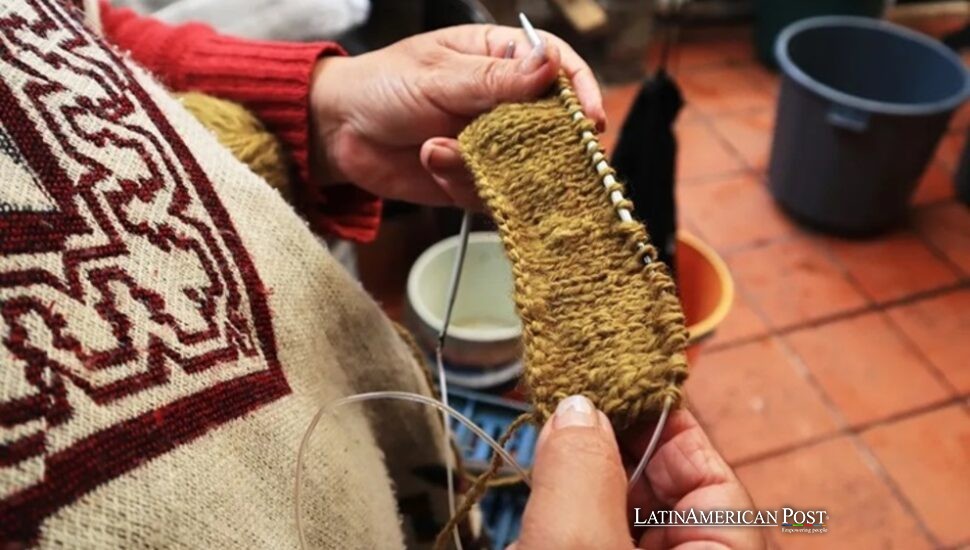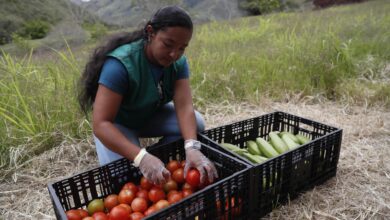Colombia Reimagines the Coca Leaf: Color, Craft, and a Quiet Revolution

In a country too often reduced to headlines about cocaine, a circle of Colombian artisans and designers is teaching a quieter truth: the coca leaf can dye wool instead of fueling wars, and a plant long demonized can still nurture beauty, dignity, and livelihood.
From “Mata Que Mata” to a Palette of Greens
All it takes is a pot, a handful of leaves, and patience. In a small studio in Sutatausa, artisan Luz María Rodríguez stirs a brew of coca powder over a wood fire. Her goal isn’t chemistry—it’s redemption. She dips a strip of white cloth into the pot, watches it shift from pale yellow to moss green, and smiles. “It isn’t a bad plant; we can put it to good use,” she told EFE, her words steady and revolutionary in their simplicity.
For decades, Rodríguez had only heard the coca leaf described as “la mata que mata”—the plant that kills. That phrase, drilled into the national psyche by anti-drug campaigns, left little space for nuance. But through the slow alchemy of craft, she has found another story. “It has many properties and benefits,” she said. “We’ve learned to see it differently—now as a material, not a threat.”
In her community, women gather around dye pots the way others gather around coffee tables. They experiment, compare hues, and share jokes. Each batch of cloth carries a small defiance: proof that coca can anchor livelihoods without feeding the illegal trade. In a country where a single plant stigmatizes entire regions, this is not just craft—it’s reclamation.
How Tinta Dulce Turns Stigma Into Color
That reclamation has a name: Tinta Dulce, or “Sweet Ink.” Founded by Bogotá designers Daniela Rubio and Mónica Suárez, the project began in 2021 as a series of natural-dye workshops for women in El Tambo, Cauca, a region scarred by conflict and coca cultivation. Their idea was radical but straightforward—if the world only saw coca as a curse, show it as color.
Rubio and Suárez taught participants how to extract pigments from local plants. Many women arrived with coca leaves, still the most abundant crop in their area. To everyone’s surprise, the leaf yielded soft greens and browns—earthy, beautiful, wearable. From there, a movement took root.
“The process is modest and exacting,” Suárez told EFE. “We buy the flour and the leaf from a supplier in Cauca, send it to rural cooperatives, and the women cook it with vinegar and rainwater until the color appears.” The chemistry is delicate—acidity shifts yellow to green, alkalinity deepens brown—but the symbolism is profound. What once signified fear now stains fabric with resilience.
Tinta Dulce began with silkworm farmers; it now includes communities in Cundinamarca, Boyacá, and Santander. Each finished cushion, scarf, or shawl embodies a small victory over stigma. Rubio and Suárez secured support from international partners, including the Open Society Foundations. Yet, their true capital is trust—the kind that grows when women see that their work has value and their crops have meaning beyond the black market.
“Each piece says the same thing: this plant can create, not destroy,” Rodríguez told EFE. And in a place where livelihoods have long been tied to illegality, creation itself becomes a quiet act of resistance.
Policy, Prejudice, and the Shadow on Coca
Reimagining Coca is easier in a studio than in statute books. “The leaf is still criminalized internationally,” Rubio explained to EFE, referencing its inclusion on the United Nations’ 1961 Single Convention on Narcotic Drugs. That classification traps the plant in cocaine’s shadow, despite Colombia’s efforts to legalize regulated, industrial, and medicinal uses.
The irony runs deep. Indigenous communities have chewed coca for centuries to fight fatigue, altitude, and hunger. Farmers drink it as tea, use it in rituals, and see it as medicine. Yet for the global market, one molecule—cocaine—defines its identity. “The most fundamental person for this project lives under very different conditions from ours,” Suárez told EFE, referring to their supplier in a region dominated by dissident FARC factions and criminal bands. “Levels of coca cultivation for illegal purposes are historic,” she added, and every spike in production reinforces prejudice against any legal use.
That bias reached new intensity when, as EFE reported, the United States removed Colombia from its list of countries deemed compliant in the fight against drug trafficking. The bureaucratic slight reverberated like an accusation. Against that noise, a handful of women stirring dye pots becomes almost a metaphor for the country itself—working quietly to redefine worth, even as the world keeps judging the past.
But design, Rubio insists, can be a political act. “Turning coca into dye doesn’t erase the damage of cocaine—it just stops letting damage be the whole story,” she told EFE. The project challenges politicians and outsiders to separate plant from poison, culture from crime. It invites empathy over panic and possibility over prohibition.

EFE/ Carlos Ortega
Teaching With Dye Pots and Children’s Books
Tinta Dulce’s next frontier is education. Rubio and Suárez have published a manual so “anyone, expert or not, can prepare the dyes,” and a coloring book for children, because transformation begins with imagination. They’ve presented their work at the United Nations Office on Drugs and Crime for two consecutive years, carrying bolts of dyed fabric instead of policy papers. “We wanted to show what coca can give—color, not fear,” Suárez told EFE.
In those diplomatic halls, skepticism faded when officials touched the textiles. No argument persuades like beauty. The same plant that finances violence also contains chlorophyll, tannins, and a story worth saving.
Of course, no dye pot will end the narcotics trade or dismantle the armed groups that profit from it. But projects like Tinta Dulce reveal another path: invest in rural craft, regulate legal uses of coca, and trust the people who know the plant in full—its risks, its rhythms, and its rewards.
For Luz María Rodríguez, every scarf dyed in coca tones is a minor restoration. “It isn’t a bad plant; we can put it to good use,” she repeats, stirring her pot as smoke curls into the mountain air. From El Tambo to Sutatausa, the leaves that once spelled danger now promise colorfast hope.
Also Read: Costa Rica’s Arenal Volcano Proves Wellness Is More Than a Tourism Buzzword
And in their hands, Colombia’s most misunderstood crop becomes what it always was—a living green, waiting for someone brave enough to see it differently.




